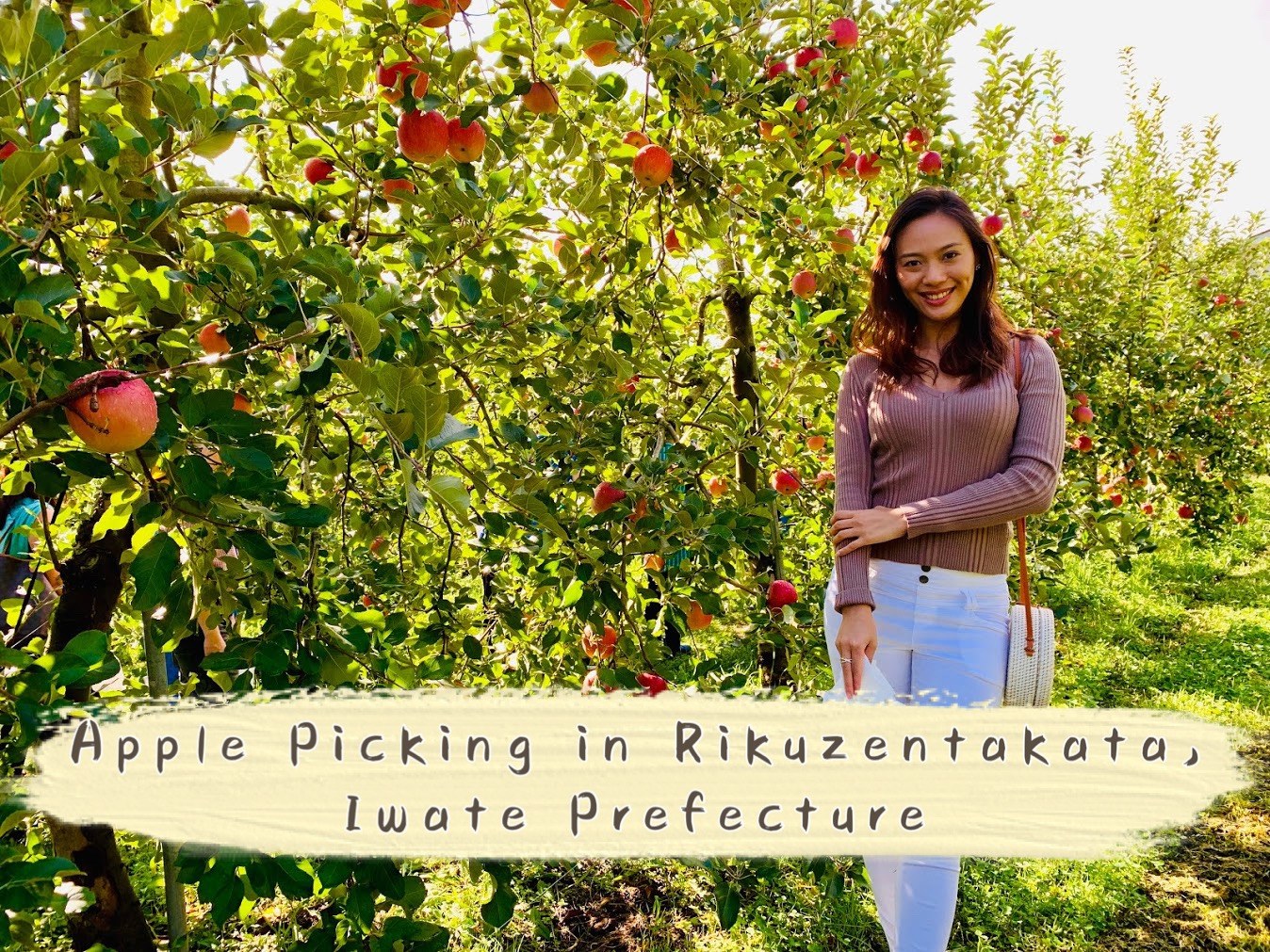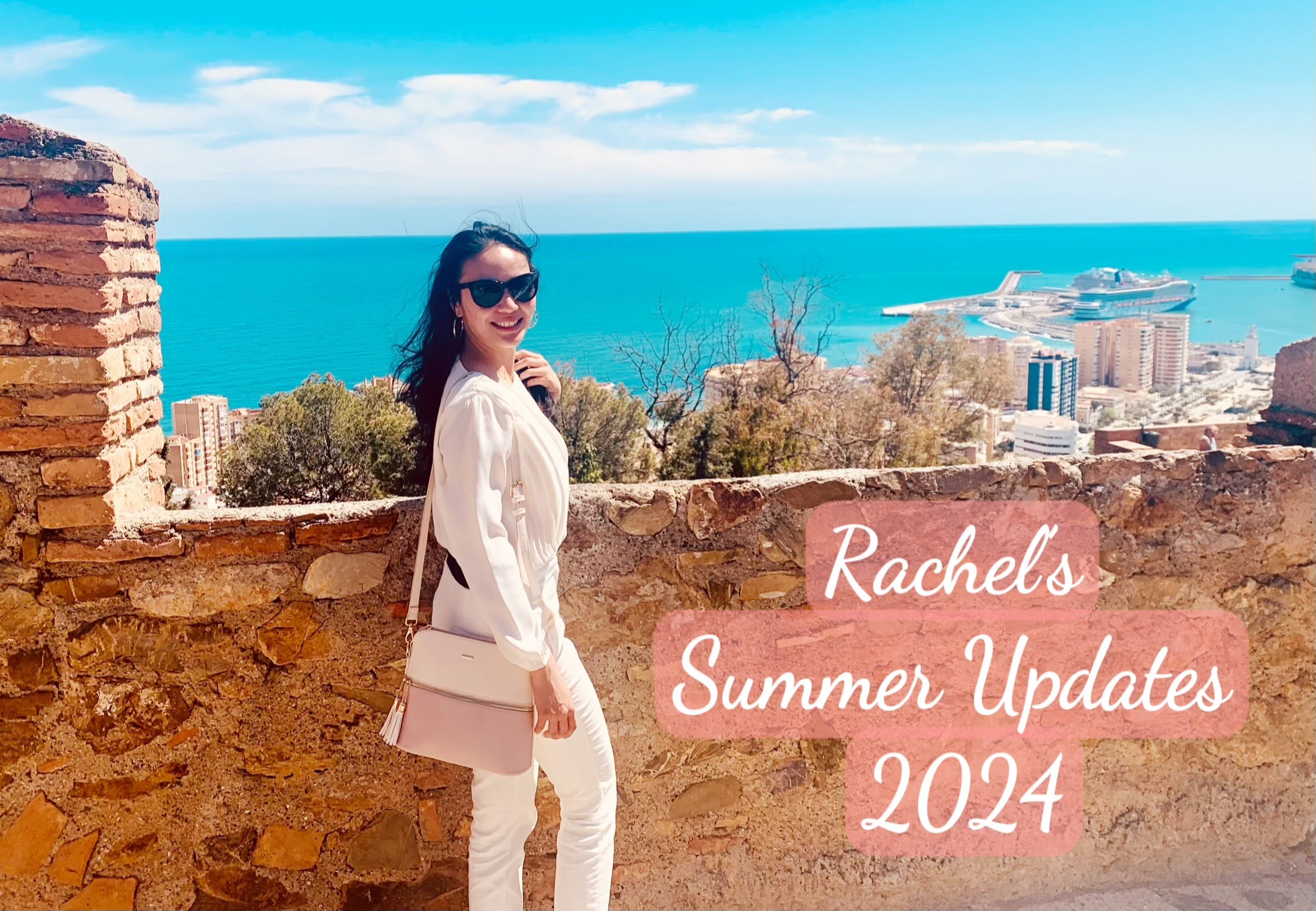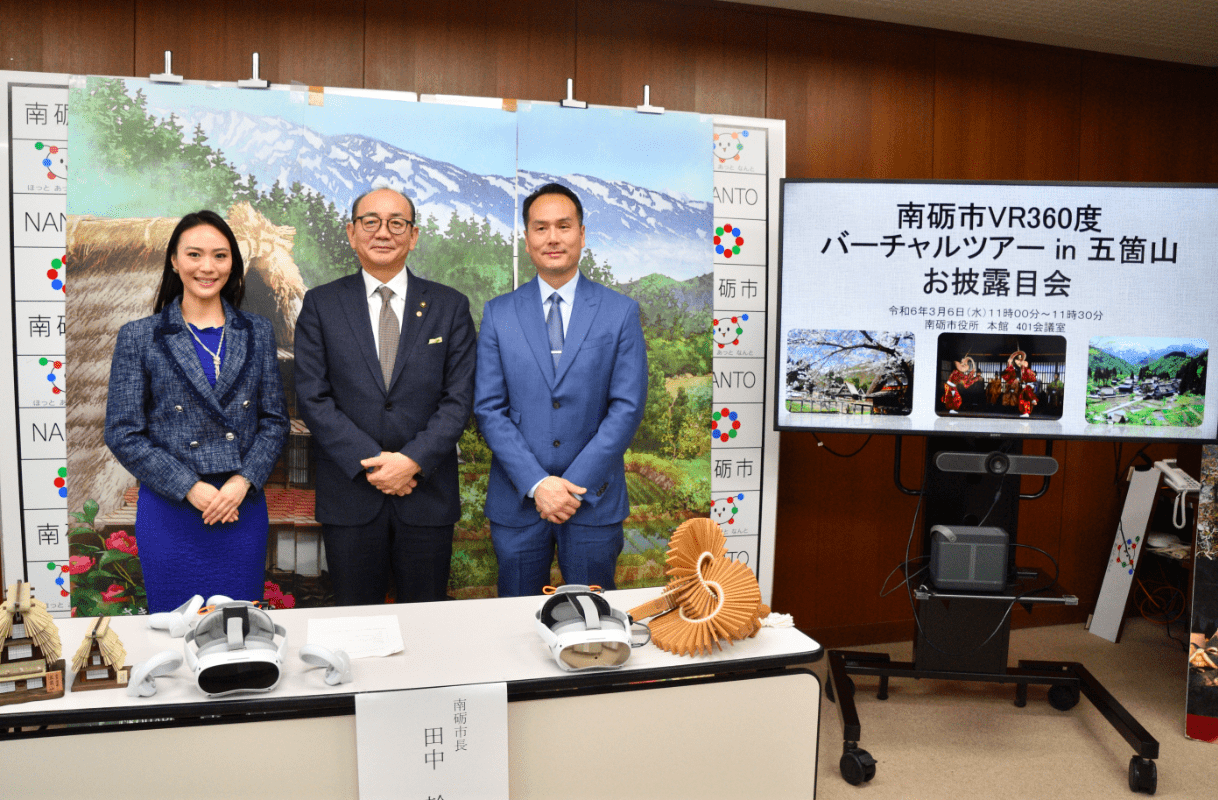Interview with Ms. Katsuko Aoyama, Chairman of the Board of Directors of the General Foundation International Flowers and Greens Therapy Association and Psychological Counselor/Hana Therapist
国際花と緑のセラピー協議会の理事長と心理カウンセラー/花セラピストである青山克子さんとのインタビュー記事
*~*~*~*
Many of you probably know about flower arrangement and maybe even of ikebana, the Japanese “Way of Flowers,” but have you ever heard of Hana Therapy?
皆様はフラワーアレンジメント、そして「生け花」についてご存じですか?「ハナセラピー」について聞いたことがありますか?
Recently, I met with Ms. Katsuko Aoyama, Chairman of the Board of Directors of the General Foundation International Flowers and Greens Therapy Association and Psychological Counselor/Hana Therapist in Tokyo, Japan.
最近、私は、国際花と緑のセラピー協議会の理事長と心理カウンセラー/花セラピストである青山克子さんとお会いしました。
To understand more about the Hana Therapy movement and how one can engage in healing by flowers, I spoke with Ms. Aoyama and also tried out my first Hana Therapy lesson! Check out my interview with Ms. Katsuko Aoyama and also what I discovered about Hana Therapy below!
花による癒しの効果について理解を深めるために、青山さんとお会いし、また、最初の花セラピーのレッスンを体験しました! 青山克子さんへのインタビューと、私が花セラピーについて発見したものを読んでください!
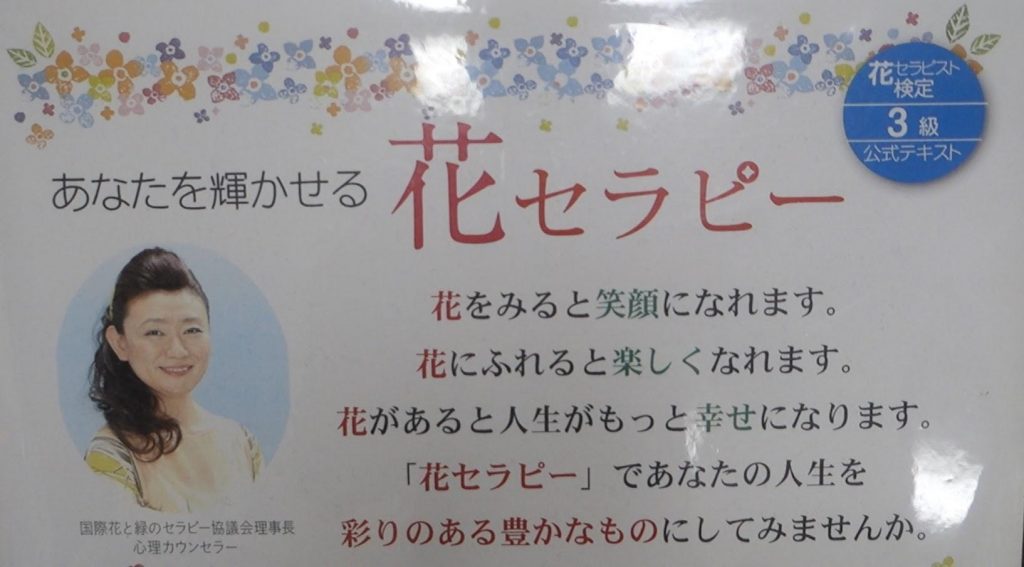
In her career, Ms. Katsuko Aoyama developed the first “flower psychology graph” – a pentagonal graph demonstrating the influence of different flowers – and is the author of Flower Therapy to Help You Shine.
著書に花の心への影響を5角形のグラフにした「花心理グラフ」を開発し、花セラピーの本「あなたを輝かせる花セラピー」があります。
| About Hana Therapy (Flower Therapy) Hana Therapy (in Japanese, “Hana” means “Flower”) is a new style of flower arrangement trending in Japan that aims to heal people through the power of flowers. The process of Hana Therapy involves understanding that each flower has different effects on people and that choosing the right flower(s) for a person or a particular situation can have therapeutic effects to support mental health. Another aspect of Hana Therapy enables people to discover their “real selves” through the flowers they arrange. Specialists in such flower creations that have psychological effects are called Hana Therapists. There are currently over 440 Hana Therapists in Japan, and even a Hana Therapist Instructor based in the U.S. (Texas). |
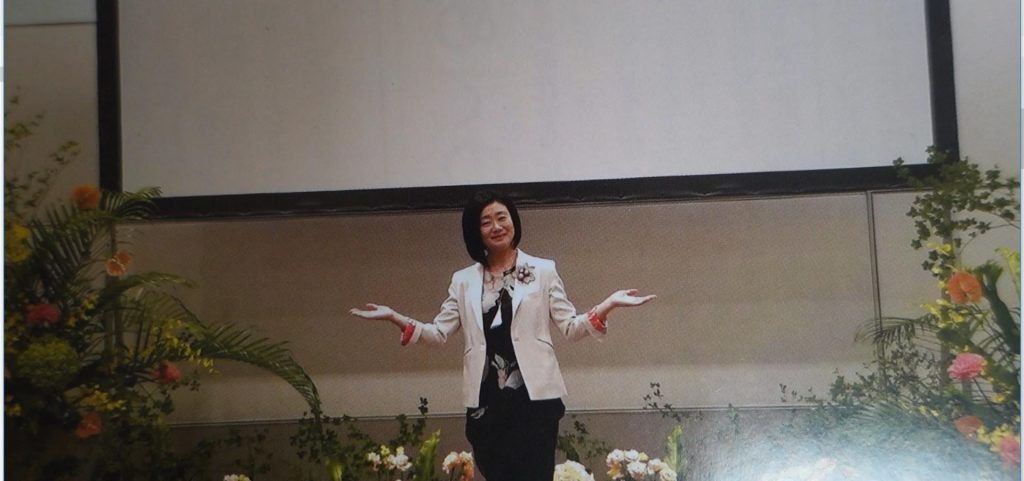
| Ms. Katsuko Aoyama The Chairman of the Board of Directors of International Flowers and Greens Therapy Association Psychological Counselor/Hana Therapist Ms. Katsuko Aoyama was brought up in a flower shop owned by her grandparents. When she was in elementary school, she suffered from poor and declining hearing. However, she realized that her hearing recovered after constant visits to the flower shop and interacting with different flowers. In her twenties, she studied the Sogetsu style of Ikebana and became a qualified “Shihan” (Grand Master) instructor. Katsuko Aoyama has been enraptured by the effects of flowers on our minds, rather than simply the beauty of flowers, and entered the world of psychology where she dedicated 16 years of her life as a psychological counselor. Today, she strives to change the world of flower arrangements by establishing the psychological effects of flowers. She founded the International Flower and Green Therapy Association in Japan on March 10th, 2011. Website: http://www.flower.or.jp/ *~*~*~* 青山克子氏 プロフィール 一般財団法人 国際花と緑のセラピー協議会 理事長 心理カウンセラー/花セラピスト 幼少期、祖父母が営む花屋で育つ。小学生の頃、聴覚機能の低下と共に花からの不思議なメッセージに気づくようになる。20代で生け花草月流を師事し、師範として活躍するが、花の美以上に心への影響に興味を持ち心理学の世界へ転身(心理学講師及びカウンセラー歴 16年)花の世界から心理カウンセラーへと、ある種「異質」な経歴が現在の軸となっている。2度の渡米経験を経て、国内で花と心理学の財団法人である国際花と緑のセラピー協議会を創設(東日本大震災前日の2011年3月10日に設立) Webサイト: http://www.flower.or.jp/ 「花セラピー」で検索! |
*~*~*~*
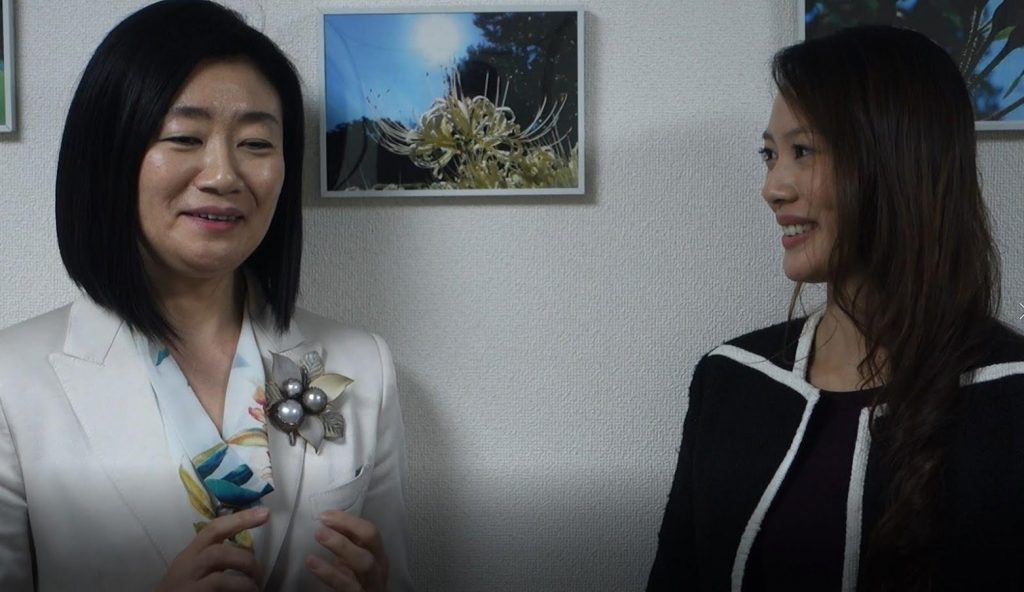
Interview with Ms. Katsuko Aoyama
青山克子氏とのインタビュー記事
Rachel: Katsuko-san, I am very excited to learn more about Hana Therapy! Could you please tell me more about how you personally discovered the power of flowers?
Katsuko: Approximately 20 years ago, I felt that my flowers healed my heart when I was having a hard experience and I found that the flowers have the power to heal their heart. I went through a divorce in my 20’s, and this was a difficult time for me when I had felt my body and soul had been shredded apart. I could hardly eat anything and I lost so much weight that I was only 40kg (about 88pounds) at a height of 163cm height (about 5f, 4in). I was actually afraid of dying at that time. It was one of the darkest depths of my life. However, I can honestly say that flowers saved me. I could not sleep much, and in my depressed state I constantly thought such things like “Happiness never comes to me for any good in my life. I want to vanish now.” Agonizing in darkness, one day my eyes fell upon white lilies that decorated my room. They gave me a sense of relief and comfort. Another time, when I walked past a flower shop, I saw some yellow tulips on display. Their bright color naturally lifted the corners of my lips, and I actually found myself in a smile. I thought to myself, “Oh, god, if I can have a smile. I might still have brightness in some corner of my mind.” I felt a tiny but bright ray of hope inside of me. I have since shed countless tears in appreciation to flowers for providing me that relief. Without those incidents, I would have never discovered the potential to experience intense human emotions – to feel joy, sorrow, anger and pleasure – through simple contact with flowers. The power of flowers imparted upon me the energy to recover my life and continue living fully.
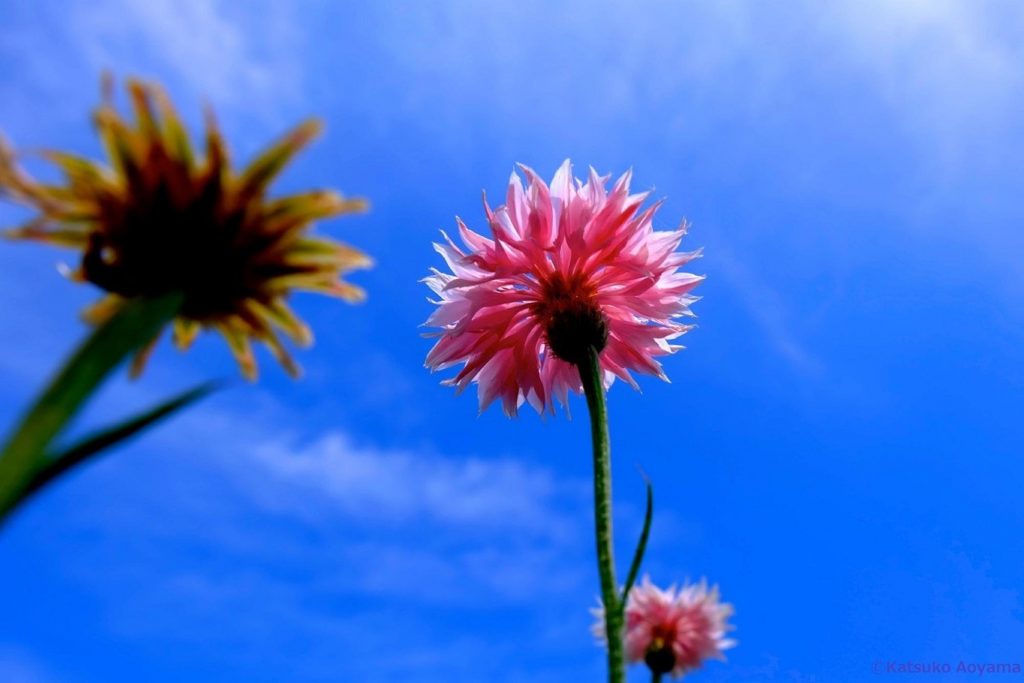
レイチェル: 克子さん、花セラピーについてもっと学びたいと思います。 あなたが個人的にどのように花の力を発見したかについてもっと教えていただけませんか。
克子氏:約20年前自分が辛い体験をして苦しい時に花が心を癒してくれたのを感じ、花には心を癒す力があると発見しました。
私は、実は20代で離婚を経験しました。若かりし頃の離婚で心と身体はズタズタになって、一時は食べものをまったく受けつけない身体になってしまい体重が40kg(身長163cm)にまで落ち込んで「このままでは死んでしまうのではないか。」と、人生のどん底にいました。
その時、どん底の私を救ってくれたのがお花でした。
食べることも、眠ることも出来ない日々、幸せに笑うことなんて絶対にない、「私に幸せなんて一生やってこない。もう、消えてしまいたい。」と、暗闇の中でもがき苦しんでいる時、ふと部屋に飾ってあった白い百合が目に留まり、少しだけ穏やかな気持ちになれた自分がいました。
またある時は、花屋の店先で黄色のチューリップが目に留まり、すると自然と口角があがって少しだけ微笑んでいる自分に気づくことができました。「ああ、私は笑顔になれる。私にも、こんな明るい気持ちがまだ残っていたんだ。」と、自分の中の小さな小さな希望の光に気づき、お花に救われた想いから、何度、涙を流したか分かりませんでした。
私はお花にふれることで、いつしか人間らしい喜怒哀楽をとり戻すことができ、お花の力で再び生きる力をとり戻すことができたのです。
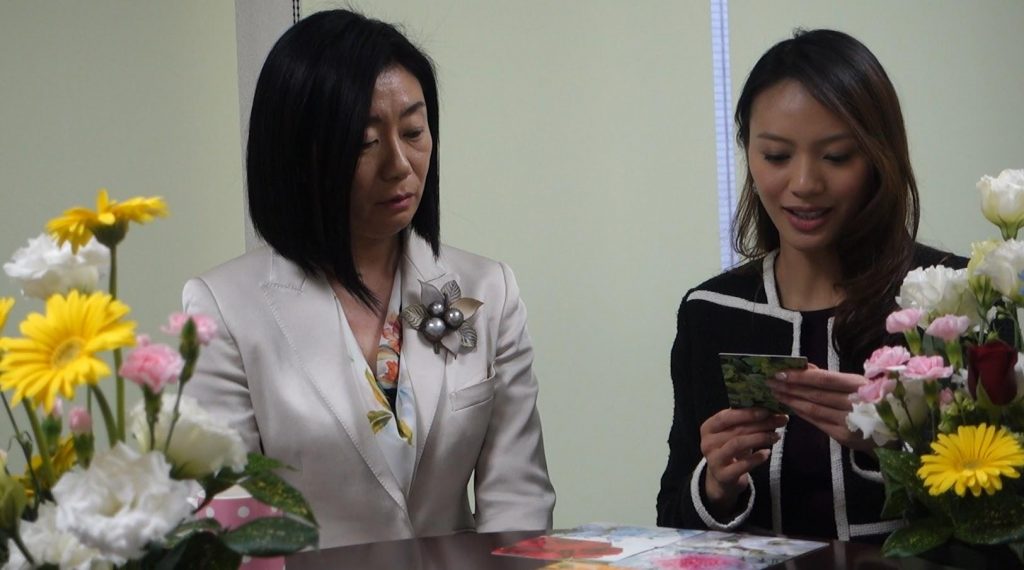
Rachel: Wow, that is a very inspiring story. How long has it been since you dedicated your life to studying the psychology of flowers?
Katsuko: I have studied flower psychology for about 22 years now.
レイチェル:凄いですね!それは非常に感動的な物語です。 克子さんが花の心理学を研究することにあなたの人生を捧げて以来、どのくらいの期間がありましたか?
克子氏: 花の心理学を学び始めたのは22年前からです。
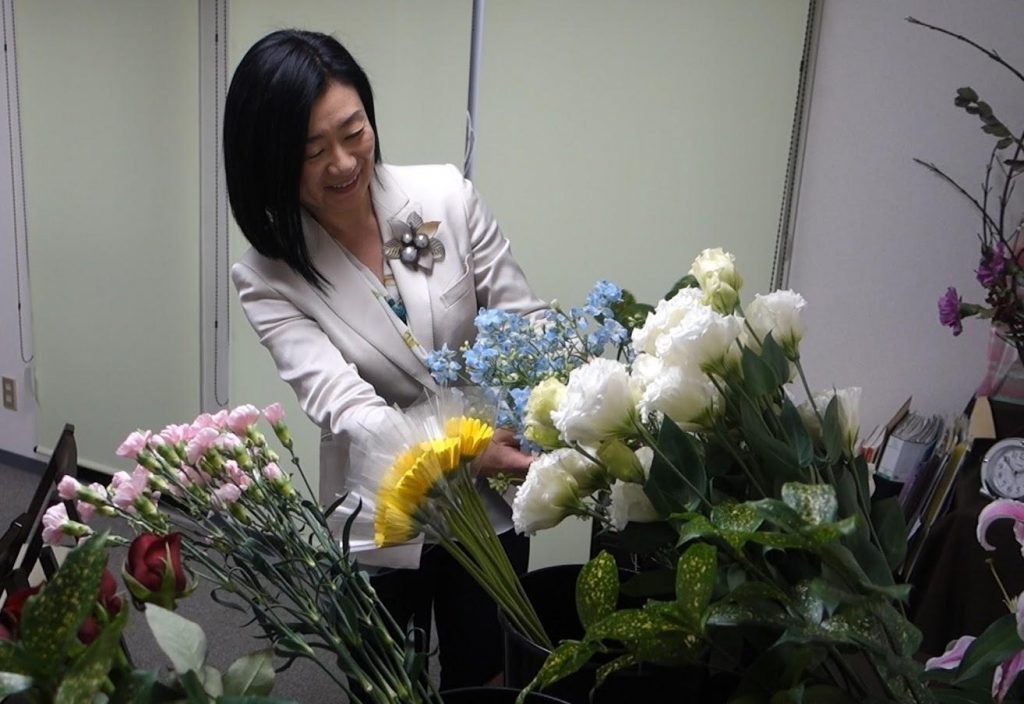
Rachel: After all of your years of studying, you finally established your foundation and Hana Therapy. Can you tell me more about the International Flowers and Greens Therapy Association (IFTA)?
Katsuko: The IFTA foundation was launched on 2011.3.10, the day before the Great East Japan Earthquake.
It is an organization that was established with the support from many people. Hana Therapist instructors are the certified Hana Therapy teachers by IFTA. Hana Therapist instructors deepen a trusting relationship with IFTA, work with Hana Therapy and its contents, and Hana Therapist Basic Course 2 and Master Course as a business.
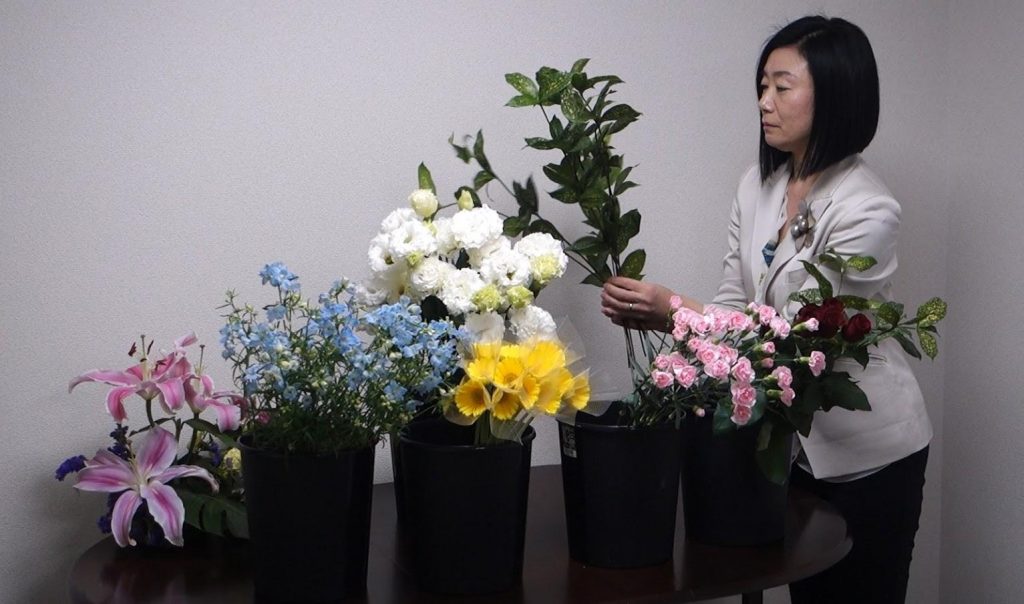
レイチェル: すべての勉強の後、あなたはついに基礎と「花セラピー」を確立しました。国際花と緑のセラピー協議会(IFTA)について教えてください。
克子氏:財団法人を立ち上げたのは2011.3.10です。東日本大震災の前日です。
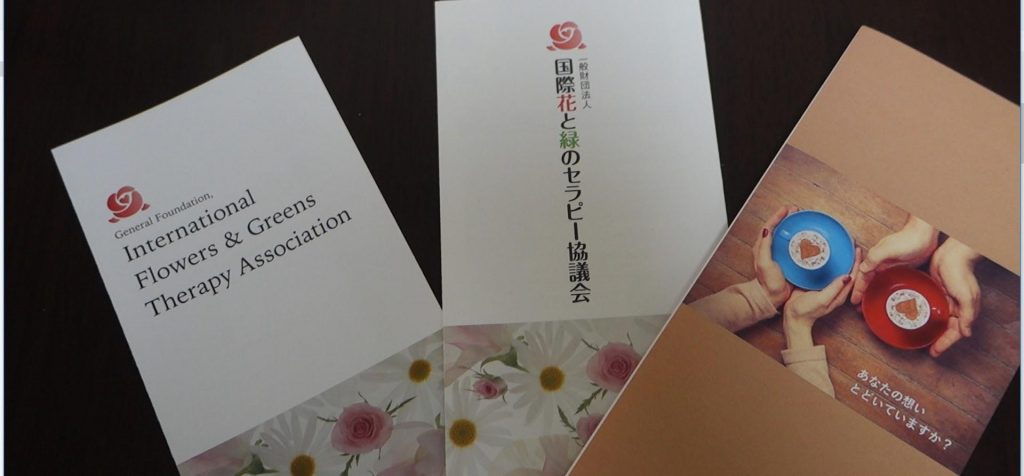
The IFTA was established on March 10, 2011, the day before the Great East Japan Earthquake of March 11, 2011.
Rachel: Wow, what timing! How did you feel and respond when the Earthquake happened the day after you launched your foundation, and how did you take action to help the earthquake victims?
Katsuko: Just one day before the Great East Japan Earth Quake occurred, I founded the General Foundation of Hana Therapy. I have to admit that I could not think of anything at that time.
One after another, scheduled flower exhibitions and booked seminars were cancelled. The whole of Japanese society was depressed, and I hesitated whether to open a new Hana Therapist class as scheduled the next month. After the earthquake, trains were not operating and power was cut. Everything at supermarkets were gone so quickly, and there were long lines of cars at gas stations. People were desperate, unable to believe the reality unfolding before their very eyes. After the days and weeks passed, I came up with the idea of “making people in the Tohoku area smile with flowers” in the spirit of contributing to others in need.
Then I went to a Volunteer Center in Ishinomaki-city, Miyagi prefecture to ask them if I could hold Hana Therapy sessions in a temporary house.
There, we provided Hana Therapist trainings in various places besides Tohoku region, and it soon spread as certified Hana Therapists soon began holding their own sessions. We have been supporting Tohoku as well as activities held by Hana Therapists, and the IFTA is an organization that aims to spread Hana Therapy culture nationwide.
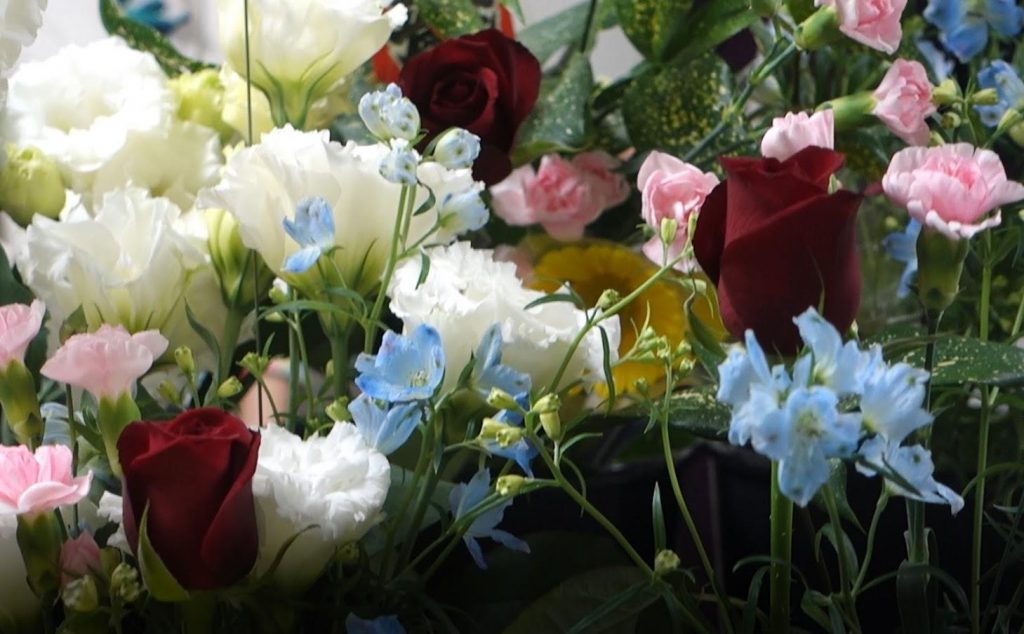
レイチェル:東日本大震災があった時、何を考えましたか?どのようにしようと思いましたか?青山さんの仕事にどんな影響がありましたか?
克子氏: 花セラピーの財団法人を立ち上げた翌日に東日本大震災があり、その時は、正直、何も考えられませんでした。予定されていた花の展示会は相次いでキャンセルになり、申し込まれていた講座はキャンセルが続出、日本社会全体が自粛モードで、翌月から予定していた花セラピストの新講座を開催していいのか?との躊躇もありました。
また、電車が何時間も動かない、自宅は停電になり、スーパーからは物がドンドンなくなってゆく、ガソリンスタンドには長蛇の列、トイレットペーパーを買うために開店前からお店の前に並ぶと、目の前の現実に必死でついてゆくのに精一杯でした。震災から1週間、2週間が過ぎてゆく中で、次第に「東北の人々を花で笑顔にしたい」という想いが湧きあがってきました。
そして、宮城県石巻市に行き仮設住宅で花セラピーを開きたいとボランティアセンターに相談にいきました。
そこで、教室を繰り返し開催することができ、東北以外にも各地で花セラピストの育成を行い、花セラピスト資格取得者が次々と花セラピー教室を開催するという広がりを見せています。今は、東北支援他、資格を取得した花セラピストの活動支援も行い、全国に花セラピーの文化を根付かせるべく活動しています。
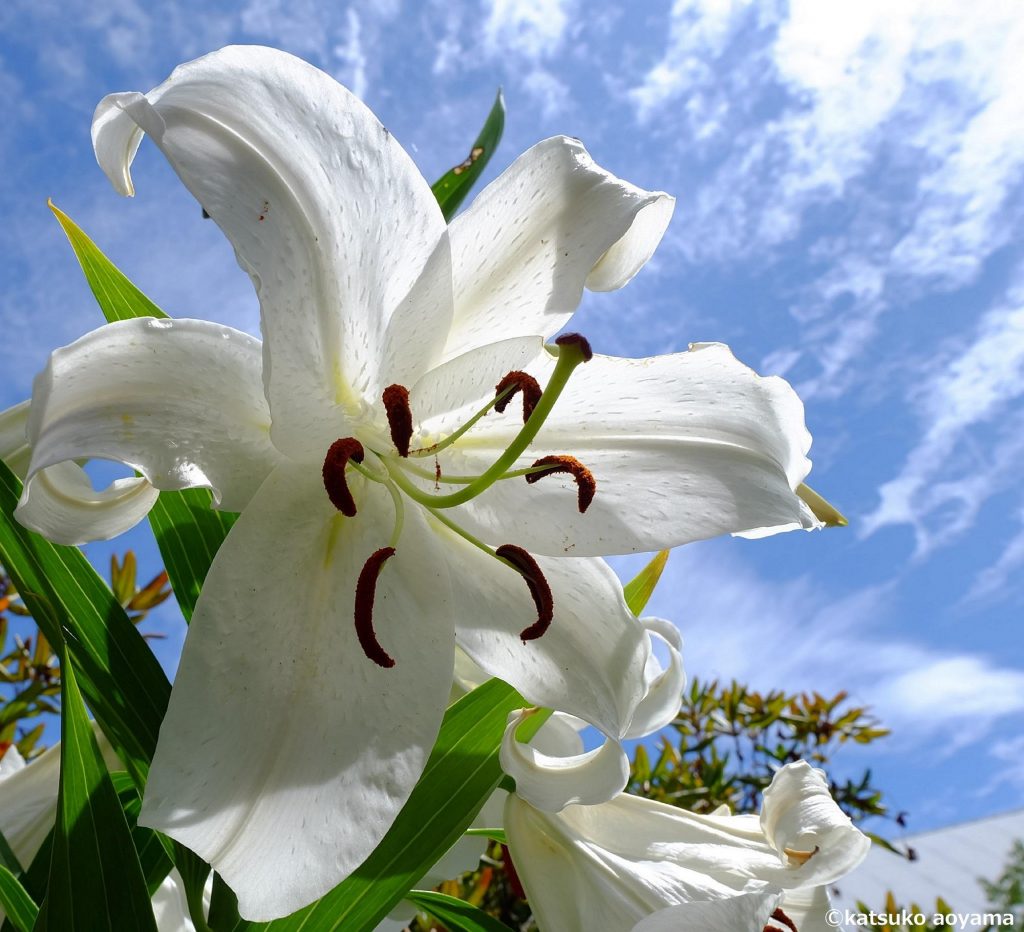
Rachel: In your definition, what is a Hana Therapist?
Katsuko: A Hana Therapist can provide flower creations which can potentially have psychological effects in various scenes of life. The business of Hana Therapist instructors is to train other instructors who can hold Hana Therapy courses including the first experience session, Basic Course, and Master Course. Hana Therapist instructors also aim to become entrepreneurs who are capable to be fully aware of social contribution by flowers and greens.
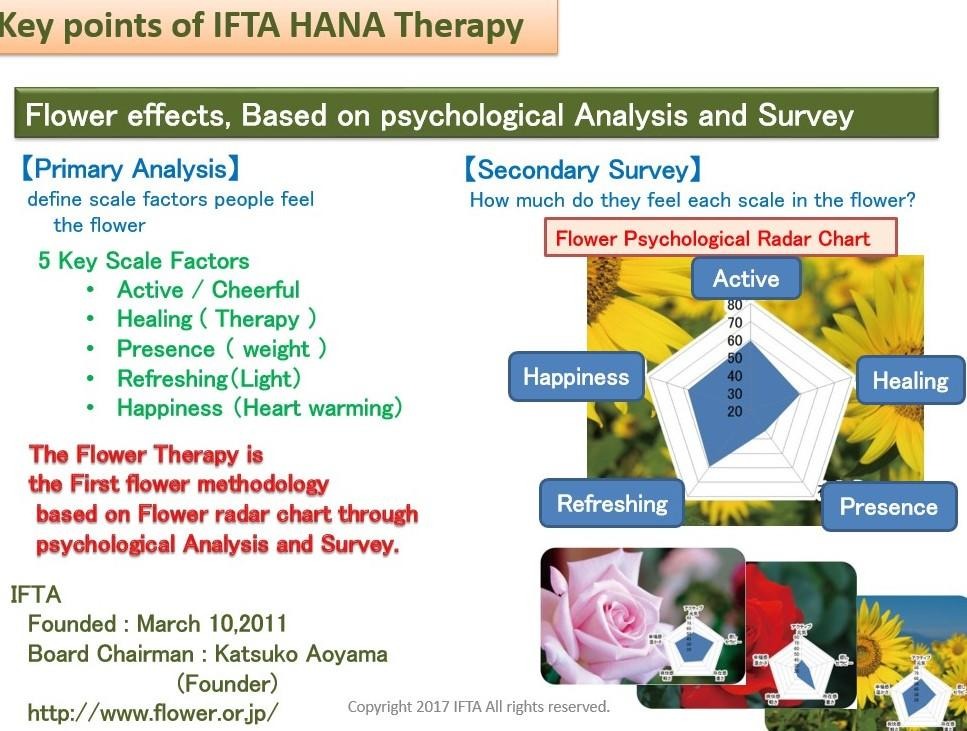
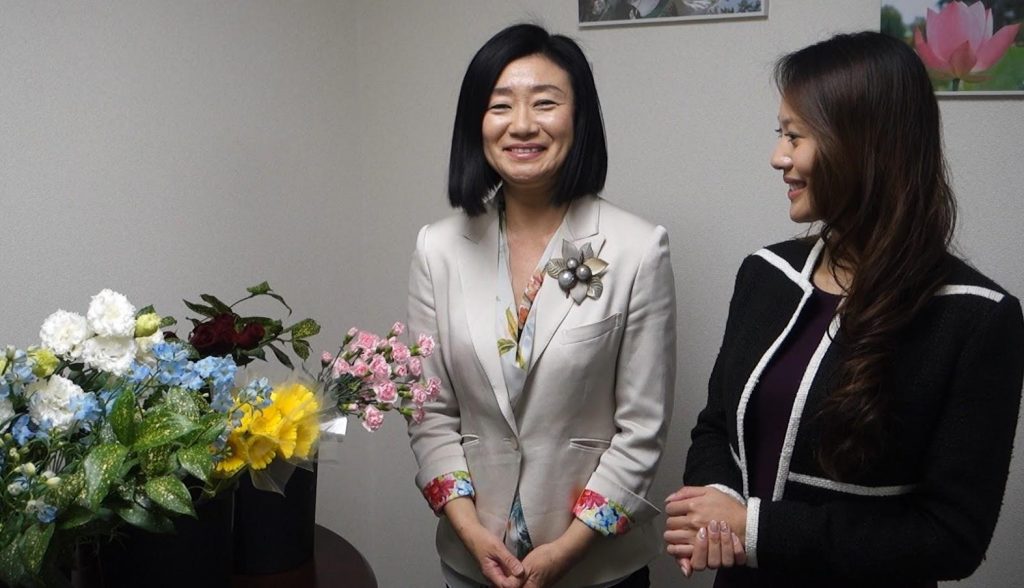
レイチェル:あなたにとって、ハナセラピストとは何ですか?
克子氏:花セラピストとは、花セラピーの知識をつかって、花で人の心を癒す「花とこころの専門家」です。
自分も人も元気づけたい、人によりそって癒したい、安心してほしい、勇気づけたい・・・さまざまな目的に合わせて自由に花を選ぶことができます。
さらに、インストラクターの資格を取得すると、協議会公認のインストラクターとなって、「花セラピスト講座」を自分で開くことができます。
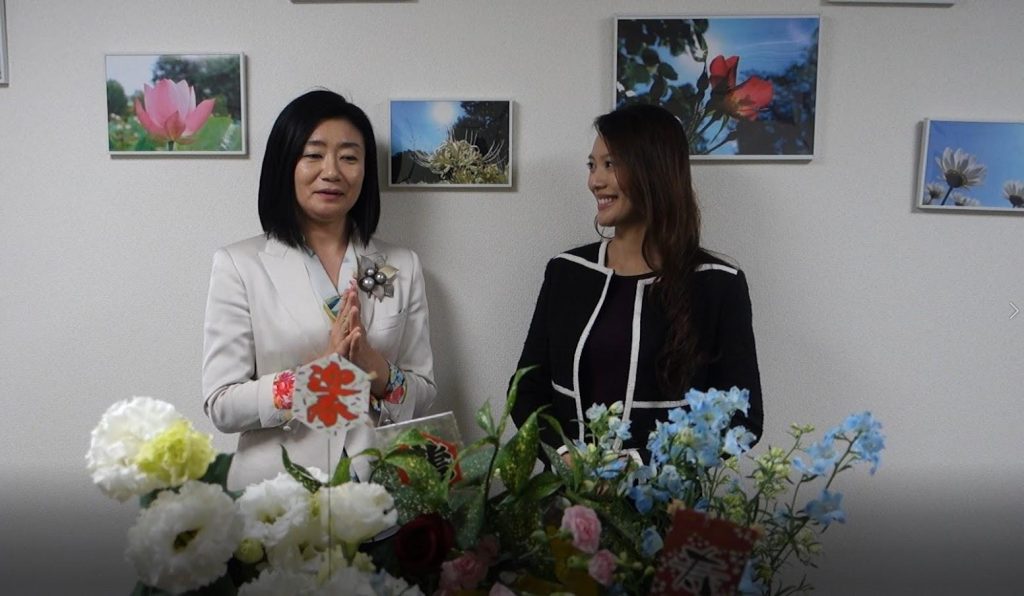
Rachel: How many Hana Therapists are there currently?
Katsuko: There are around 440 Hana Therapists and 230 Hana Therapist Instructors. We even have one Hana Therapist holding sessions in Texas, U.S.

レイチェル:ハナセラピストは現在何人いますか?
克子氏:花セラピストは440名; 花セラピストインストラクターは230名
その内の1名はダラスで花セラピストインストラクターとして活躍しています。
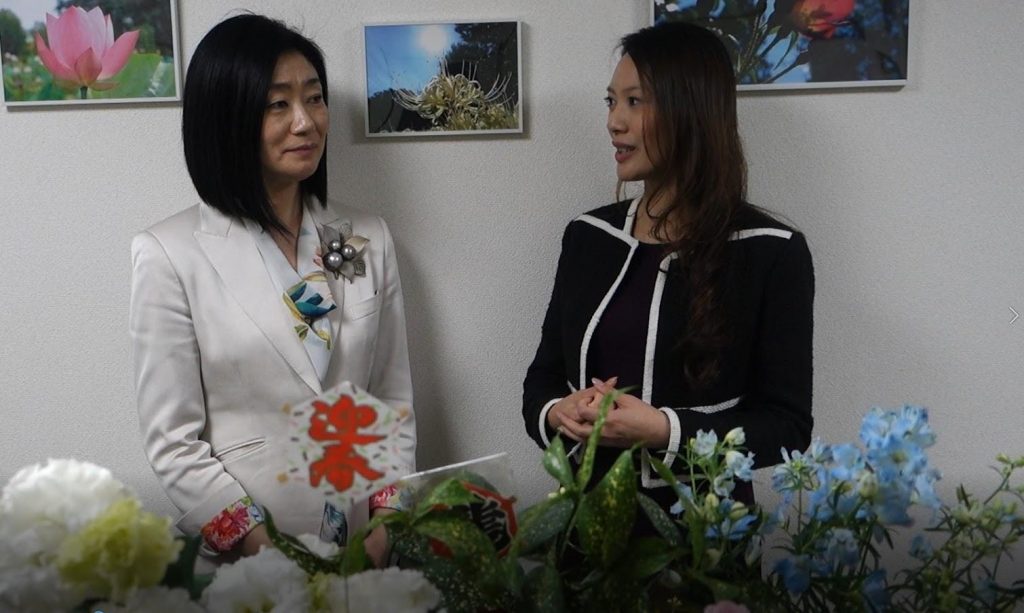
*~*~*~*
Trying out my own Hana Therapy experience and flower creation!
ハナセラピーの体験と花作りを自身で試してみました!
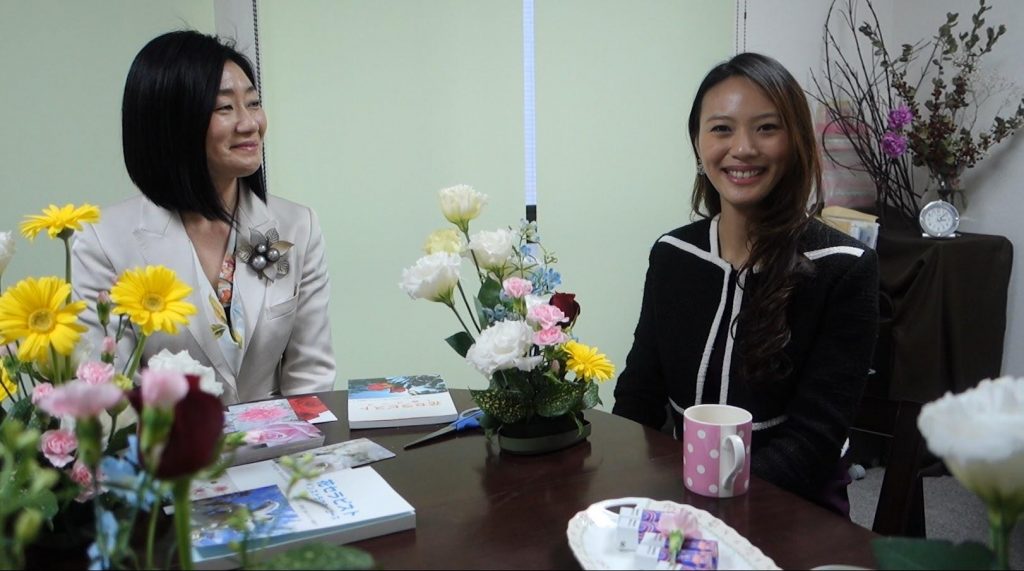
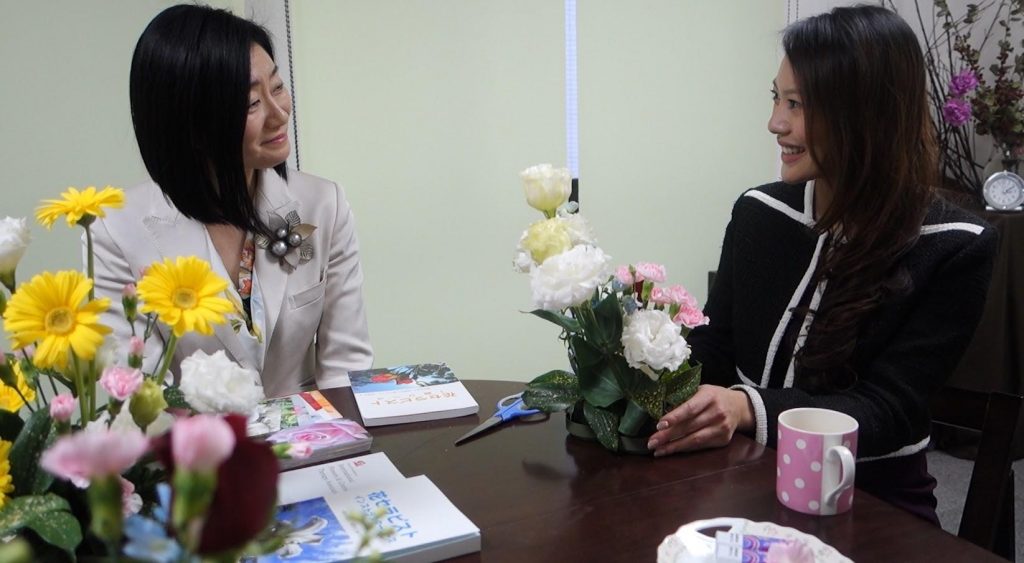
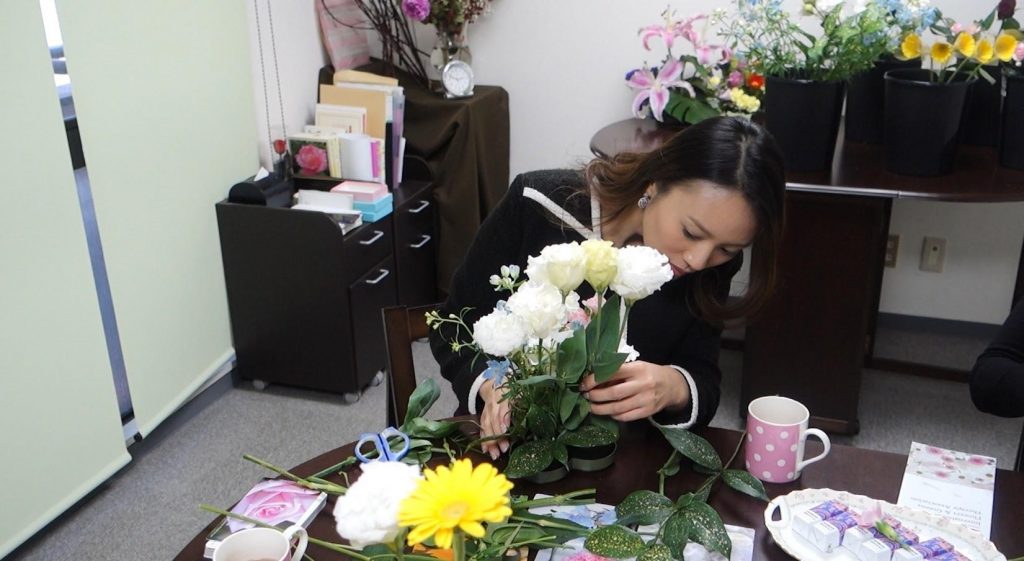
Rachel: Japan has a very long tradition of flower arrangement as an art form, called ikebana.
Ikebana (生け花, 活け花, literally to “make flowers alive”). It is also known as Kadō (華道, “way of flowers”). Ikebana reached its first zenith in the 16th century under the influence of Buddhist tea masters and has grown over the centuries, with over 1,000 different schools in Japan and abroad.
In your opinion, Katsuko-san, how is Hana Therapy similar to or different from ikebana?
Katsuko: I feel that Hana Therapy is similar to Sogetsu school style (which I belong to and have learned for 25 years) rather than Ikebana in general. Ikebana is the original source of Hana Therapy for me as a Japanese. However, the Sogetsu school takes the approach of arranging flowers freely, reflecting your own senses. This inspired me to create Hana Therapy to allow people to arrange flowers spontaneously according to ones’ heart and feelings.
Ikebana structures flowers into beautiful arrangements, but flower therapy is an approach that enriches your mind, keeps your health, and warms your heart more than simply having fresh flowers arranged beautifully.
One key difference is that ikebana has strict rules such as flower insertion length, insertion position, angle, etc. In contrast, Hana Therapy does not have any rules – one simply lets the flowers live freely in the heart.
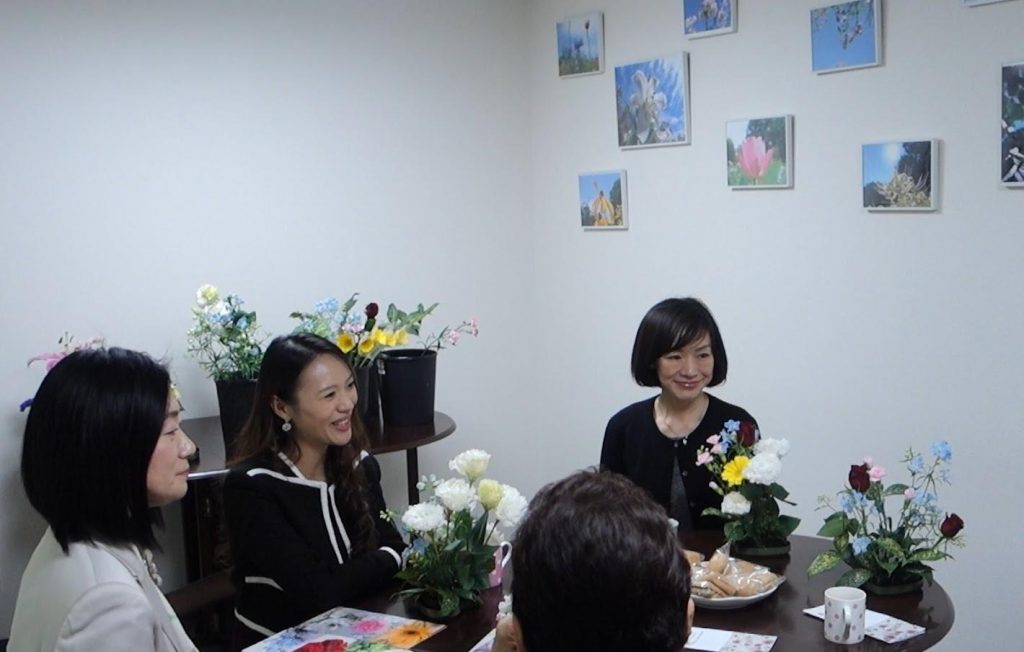
レイチェル:克子さんは、生け花を以前に学びましたか。あなたの意見では、花セラピーと生け花はどんな関係がありますか?どうやって違いますか?
克子氏:はい。草月流の生け花を学んだことがあります。25年間今でも学んでいます。日本人の私にとって生け花は花セラピーの原点となっており、私の草月流の先生が自由に生ける表現を大切に教えてくださったので、ここから花セラピーが誕生したと思っています。
この花セラピーの「生け花」は、私が所属している草月流と似ているところはあると私は感じています。草月流は生け花の中でも個人の感性から自由に生けるスタイルなので、ここから花セラピーを「心のままに自由に生ける」という発想を生みだしました。
生け花は花を美しく生けるが、花セラピーは花を美しく生ける以上に心の調子を整える、心を豊かにする、健康を保つコンテンツとなります。
また、生け花は花を挿す長さや、挿す位置、角度などルールがあるが、花セラピーはルールがないのがルールで心のままに自由に生けることができます。
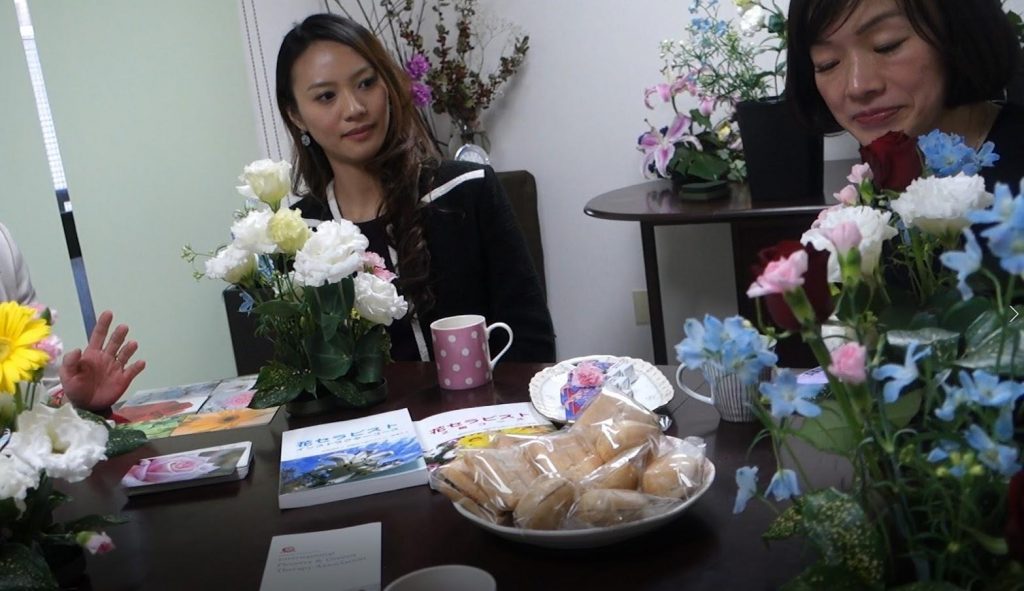
Rachel: It is fascinating that you incorporate psychology into flower therapy. Could you please explain more about this?
Katsuko: It is very important to pay attention to the fact that the inner face of a person’s heart changes greatly because the expression and atmosphere of a person changes by a simple act of choosing flowers and living flowers. Flower therapy takes self-insight through flowers, notices the feelings in your own unconscious, and changes behavior as well. I think of this as a flower-based psychology and knowledge about how the mind responds to flowers.
Specifically, there is a theory of counseling psychology in the background of flower therapy.
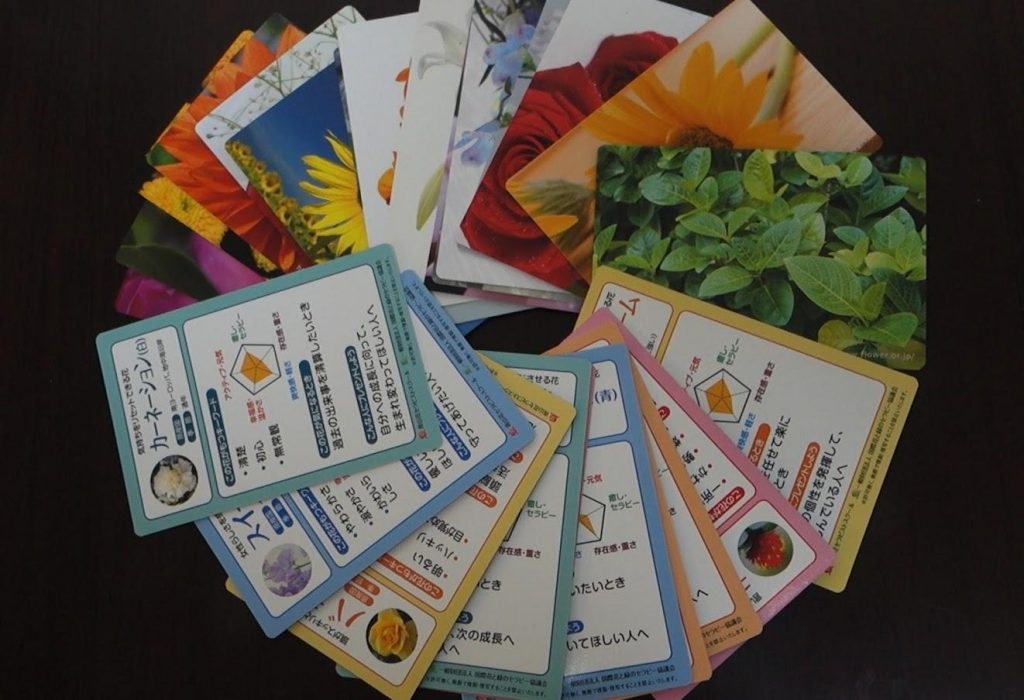
レイチェル:心理学を花セラピーに取り入れているのは魅力的です。 これについてもっと説明していただけますか。
克子氏:私の意見では花を選び、花を生けるというシンプルな行為により、人の表情や雰囲気が変わるため、人の心の内面が大きく変化することに着目しました。花セラピーは、花を通して自己洞察し、自分の無意識の中の感情に気づき、そして行動も変わる、これは花による「心が変わる知識」として、これを花による心理学と考えています。
具体的には、花セラピーの背景にはカウンセリング心理学の理論があります。
*~*~*~*
The Psychology of Flowers
花の心理学
Different flowers have different psychology charts and therefore different impacts on people.
花によって心理フラワーチャート(後記参考)が異なるため、人々に対する影響も異なります。
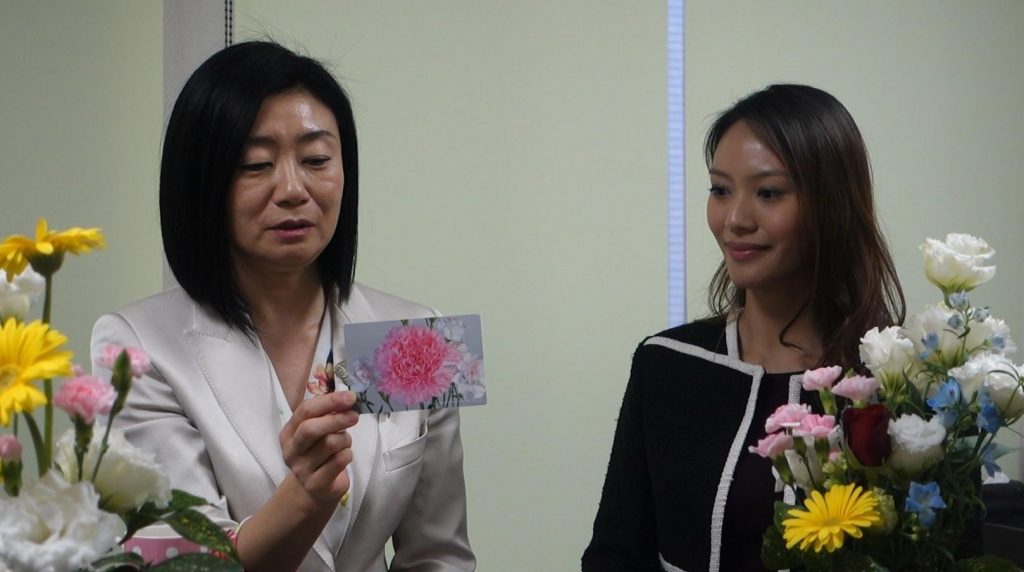
Pink flowers generally represents a kind and fun-loving spirit. Many people in the medical field involved with caring for others such as doctors and nurses tend to be attracted to pink flowers.
ピンクの花は一般的に親切で楽しい愛情のある精神を表します。 医師や看護師など他の人の世話をすることに関わる医療分野の多くの人々は、ピンク色の花に惹かれがちです。
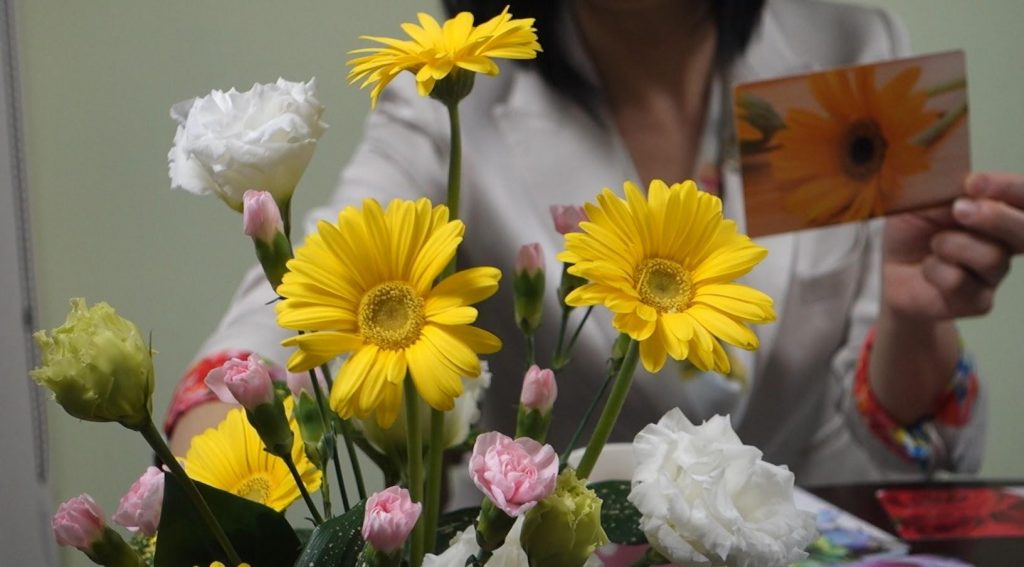
Yellow flowers relieve mental stress and help people feel refreshed and energized.
黄色い花は精神的ストレスを和らげ、人々がリフレッシュして元気づけられるのを助けます。
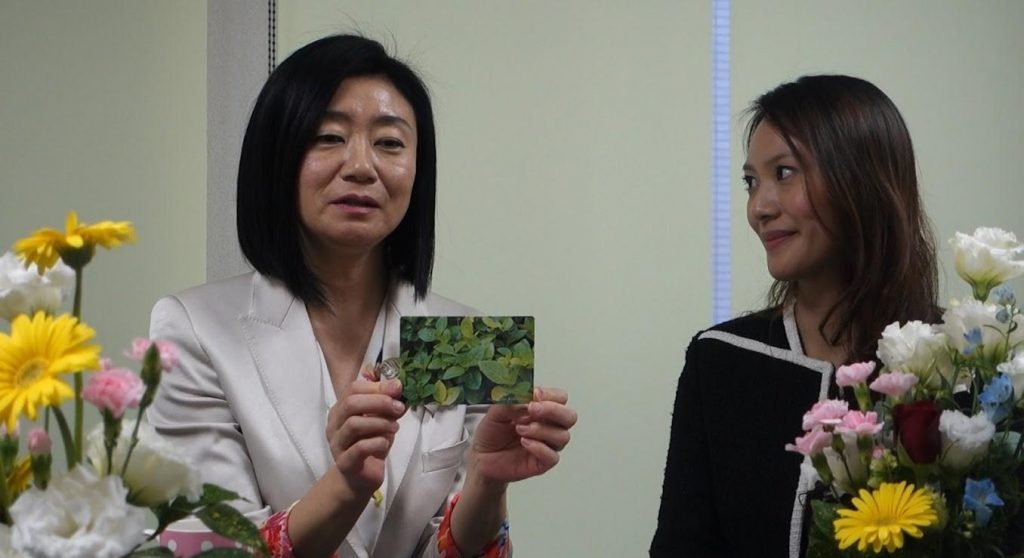
The effect of leafy greens is still being researched on, but for now, they are considered neutral.
緑豊かな葉の影響はまだ研究されているところですが、今のところ、それらは中立と考えられています。
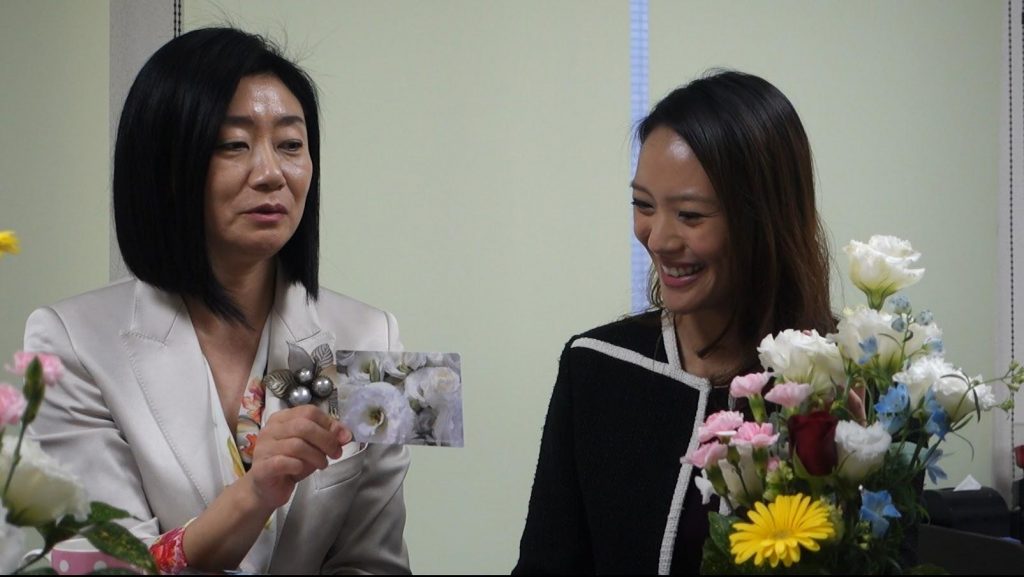
People who choose white colored flowers tend to be serious and diligent high-achievers, prepared to work hard towards future goals and are constantly challenging themselves to do better.
白い色の花を選ぶ人々は、将来の目標に向かって懸命に努力する準備をしていて、常により良いことをすることに挑戦し続けている真剣で勤勉な高達成者である傾向があります。
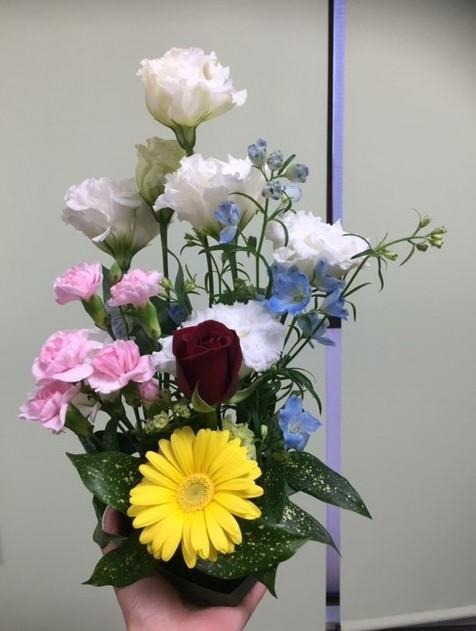
White carnations featured prominently in my flower creation!
The height of the flowers arranged also matters – with the tallest flowers reflecting the strongest sentiments.
白いカーネーションは私の花の創造において際立って特色になりました!
挿すときの花の高さも重要です – 最も高い花は最も強い感情を反映しています。

Rachel: What is your favorite flower?
Katsuko: Delphinium. This flower has the ability to soothe and lift my spirits, and naturally makes me smile. My very own nature feels deeply connected to this flower.
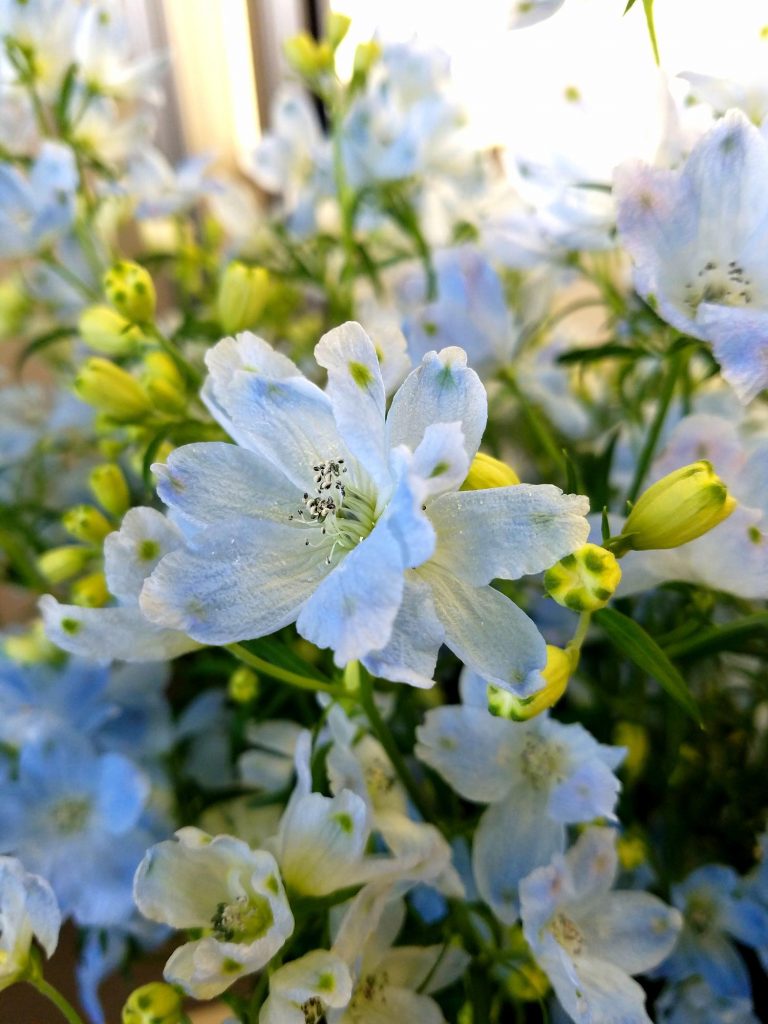
レイチェル:どんな花が一番好きですか?
克子氏:私はデルフィニュウムの花が好きです。
この花を見ていると心が柔らかくなり晴れやかな気分になって、つい微笑んでしまうからです。私の本質とこの花が深く共鳴しているからだと感じています。

Rachel: To wrap up, what impact and opportunities do you envision that Hana Therapy can provide to people? What is your next goal?
Katsuko: Experiencing Hana Therapy provides the opportunity to take a living flower and gain a better sense of being alive. You will be more aware of your own emotions and even better understand your unconsciousness from interacting with flowers. Hana Therapy is effective in providing stress relief, and people who learn about flower psychology also deepen their self-understanding and relationships with loved ones, improving their communication skills and increasing their chances of identifying future goals.
For my next goal, I want to witness 1000 flower therapy events held in the spring of 2021.I hope that Hana Therapists Instructors will be able to set up their own small businesses. Ultimately, I would like to spread the values of flower psychology rooted in Japanese culture to the USA, Europe, Singapore, Hong Kong and Australia. I want to share the power of flowers to liberate the heart and make people around the world smile.
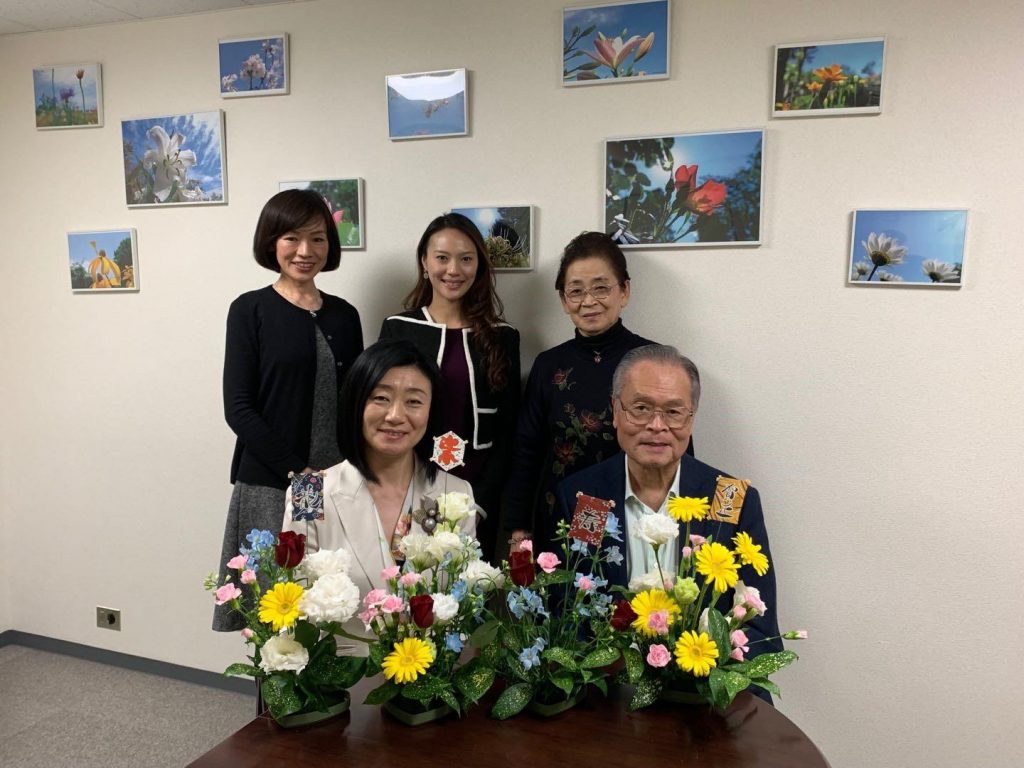
レイチェル:まとめると、花セラピーが人々にどのような影響と機会をもたらすことができると思いますか。 次の目標は何ですか?
克子氏:生きている花にふれて生き生きとした感覚を得て、花を通して自分の感情に気づき、潜在意識からの必要なメッセージに気づきます。
そして、自由にいけるためストレス解消になり、一緒に参加した人同士の理解が深まり、関係がよくなり、コミュニケーション能力も高まり、花からのメッセージを知ることにより自分の将来の目的に気づくことができます。
2021年春に1000人の花セラピーイベントを開催。
この資格を取得した花セラピストインストラクターが新しい事業を立ち上げて、仕事を得て収入を増やす仕組みを作る。
日本とアメリカ、ヨーロッパ、シンガポール、香港、オーストラリアに「花心理学」の新しい価値観を文化として根づかせたい。花に自由にふれて、自由に生ける習慣を広めたい。世界の人々を花で笑顔にしたい。
*~*~*~*
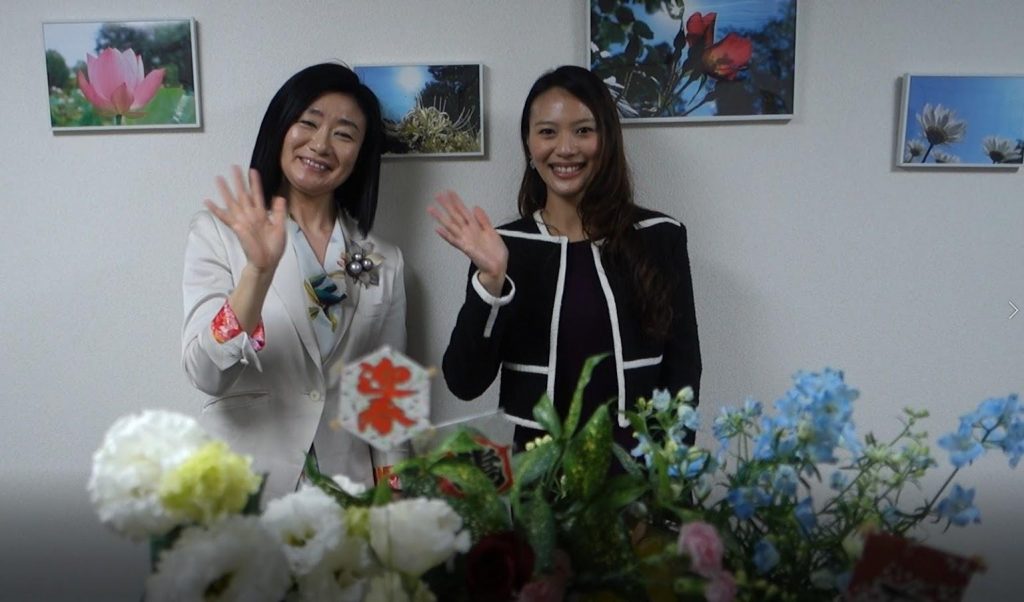
My Thoughts on Hana Therapy
最後の一言
Ms. Katsuko Aoyama’s mission to bring smiles to everyone around her, relieve their psychological burdens and stress, and allow them to live a brighter, happier, fuller life through flowers and Hana Therapy is truly inspiring.
青山克子さんが周りの人たちに笑顔をもたらし、心理的な負担やストレスを取り除き、花を通じて明るく幸せで充実した人生を送ることができるという花セラピーは、本当に刺激的だと思います。
All of us have had the experience of buying and arranging flowers to offer happiness, congratulations, sympathy, love and friendship to another person. Whether we experience them as a gift of nature in the garden, or by receiving or giving a gift of flowers, these natural beauties are always welcome and never fail to brighten our lives.
皆さんが花を購入して、幸福、お祝い、励まし、愛、そして友情の証しとしてプレゼントした経験があると思います。私たちが庭で花を自然からの贈り物として受け取るか、花の贈り物をいただくかプレセントするかにかかわらず、これらの自然の美しさは常に歓迎され、私たちの生活を明るくします。
However, before trying out Hana Therapy, I had never thought of flowers and plants as having “therapeutic powers.” Whether a single wildflower, a grand bouquet, or a dose of medicinal flower essence, I now better understand how these natural lifeforms have the power to heal, inspire, and touch our humanity.
しかし、花セラピーを体験する前は、花や植物が「治癒」を持っていると考えることはあまりありませんでした。野生の花、花ブーケ、または薬用フラワーエッセンスはどれを使っても、人々を癒し、鼓舞し、そして心に触れる力があるかもしれません。
It was fascinating to learn how different blossoms have distinct healing properties based on their appearance, fragrance, essence, color, and energy that work to address specific needs and desires. Perhaps flowers channel nature’s true healing abilities. I would even say that Hana Therapy incorporating psychoanalysis should be considered a form of naturopathic medicine (a blend of modern, scientific knowledge with natural forms of medicine).
外観、香り、エッセンス、色、そしてエネルギーに基づいて、さまざまな花が異なる癒しの特性を持っていることを学ぶのは興味深いことでした。 おそらく花は自然の本当の癒しの能力を導くと思います。 精神分析を組み込んだ花セラピーは、自然療法医学(現代の科学的知識と自然な医学形式の融合)と考えるべきかもしれません。
Hana Therapy has the power to allow individuals to better understand themselves, improve their mind, and help facilitate smooth communications between people. In my own experience, I was surprised to learn about the deep emotions, cravings, and anxieties that I harbored that I was not even conscious of, but was expressed through my subconscious attraction to specific flowers!
花セラピーは、個人が自分自身をよりよく理解し、彼らの心を向上させ、人間関係の円滑なコミュニケーションを促進するのを助ける力を持っています。 私自身の経験では、意識さえしていませんでしたが、無意識に選んだ花でさえも、私自身の深い感情、欲求及び不安感がその花に表れているのだということに驚きました!
With the Olympics 2020 held in Tokyo drawing near, Ms. Aoyama hopes that more people can acquire knowledge of Hana Therapy and better understand the healing power of flowers, so that flowers can spread more emotional, psychical and spiritual beauty around the world. I truly hope that she will achieve her mission to better humanity and look forward to supporting her on her journey!
青山さんは、東京で開催されるオリンピック2020が近づくにつれて、多くの人々が花セラピーの知識を身に付け、花の癒しの力を今以上に理解できるようになることを願っています。 私は彼女が使命を達成することを、心からお願い、応援したいと思います!


Website: http://www.flower.or.jp/
「花セラピー」で検索!






